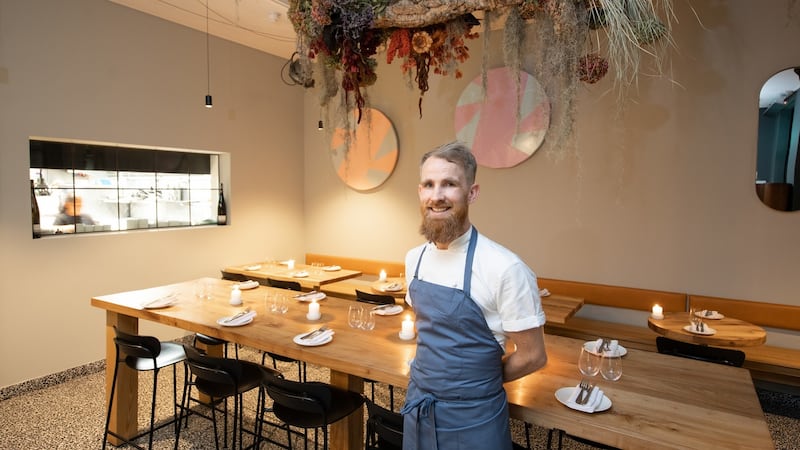Whether we like it or not, we have a tipping culture in Ireland, and, from December 1st, any tip or service charge on a bill goes directly to the staff. Tips cannot be withheld and used to bolster wages to what was contractually agreed, redeployed for staff uniforms, or stashed away for staff nights out.
So will the shortfall in revenue for restaurateurs who were used to taking a slice of the tips – a much-publicised international operator comes to mind – mean that there will be an increase on the already escalating menu prices we’re presented with when we venture out for our Christmas cheer?
“I think anybody who’s money hungry will use anything to increase the prices,” says Sadie Pearce, who owns Pilgrim’s restaurant in Cork with her partner, Mark Jennings. “I think if you’re going to raise your prices, be transparent and say, we’re increasing our prices because we want to give a better wage to our staff, and if they’re honest about it, then yeah. But not if they’re just doing it to get more money.”

A few other adjustments may be required. Not only are employers obliged to display their policy on the distribution of both cash and card tips, they must also distribute them fairly. And here’s where it gets a bit murky.
Speaking to a number of people working front-of-house in Dublin restaurants, it would appear that most of the newer restaurants have a transparent policy similar to that at Pilgrim’s, where the money is distributed evenly between all members of staff, front and back of house. There are quite a few restaurants, however, that run a points system, where those of higher rank or longer service, such as chefs and managers, get a higher percentage of the tips. Not good news if you’re the kitchen porter doing the heavy lifting in the back.
Don’t jump to the conclusion that the old fogeys are the offenders here – it is also a practice in some very fashionable spots around town. Whether this policy can be judged to be “fair” within the new legislation is another thing. There are no parameters in place to establish what is fair and equitable – it is open to interpretation. But at least now this policy will have to be pinned up in black-and-white, rather than a verbal here’s-how-we-do-it, or restaurant staff finding out by chance.
Many restaurants have a policy where a percentage of the tips are “tipped out” to a tronc, with the waiter keeping the balance. In Bewley’s, which has a good reputation for transparency, rather than asking waiters to give in half of their tips, sales per waiter – excluding tips – are calculated each evening, and the waiters then contribute 4.5 per cent of the total sales to be shared with the rest of the staff. The waiters keep the remainder of their tips, which means that in the summer – when the Americans are spilling through the doors with a default setting of 20 per cent tipping – the waiters do well, but times can be considerably leaner when there’s a roomful of European tourists, who are unaware of the tipping culture in Ireland, or after Christmas when no one feels like tipping for a coffee. Then the 4.5 per cent comes out of their float.
There is of course the grey area of what works best for the staff – tips paid by card or in cash – but it gets even more complicated when a service charge is included as part of the bill.
“At the moment, we charge all of our guests 12.5 per cent service charge. That gets pooled up at the end of the week, and shared equally among all the staff depending on hours worked,” says Kevin Burke, chef/patron of Library Street restaurant in Dublin. “The kitchen, the front of house, the kitchen porter – if you work the same hours as someone beside you, you will get the exact same amount of service charge. What we are looking at doing is to change things, where we only charge tables of six and above a service charge, and for the rest, gratuity is going to be down to the guests on the night. I’m hoping that the guys here will have more take-home pay.”

In higher-end restaurants where there is no service charge, diners usually tip generously; 12.5 per cent is the norm, and, in some cases, tips can be up to 20 per cent of the bill, so Library Street’s new approach, which was a staff decision, could well work out better for them. While service charge included on the bill is liable for 9 per cent VAT, gratuities are not. Burke says that if the trial does not work out, they will go back to the original service charge system.
But 20 per cent? Are we losing the run of ourselves? And is this something we can all afford? “I think the American tipping culture leaking into Irish culture can sometimes be a bit overkill at the moment, because we’re all making at least minimum wage and most wait staff would probably concur that the 10 per cent is very decent of most people,” is the view of a waitress who has worked many years in the industry in Dublin. She points out that it’s quite different in the US where tips are seen as part of the wage. On a J1 visa last summer, she was making $6 an hour plus tips, so the 20 per cent gratuities were crucial to making a living in a city where the minimum wage is $15 per hour.
One barista who uses the Square contactless payment system says that it can be awkward when it comes to tipping for coffee. The tipping option automatically pops up, which he feels puts customers under pressure. He frequently presses the “skip” button, and forgoes tips. There is also a transactional charge on these systems, so under the new law, this cannot be deducted as a percentage from money that is left as a tip.
With all of these grey areas, would we be better ditching the tipping system completely? In Japan, not only is there a no-tipping culture, it is considered rude. In New York, it has been trialed by restaurateur Danny Meyer, who gradually introduced a no-tipping policy in 2015, only to revert to the old system in 2020; and it is being touted in some European restaurants.
The Ethicurean in Bristol announced earlier this year that they’re stopping all tips. Instead, they’re increasing their prices to cover a living wage for all of their staff, who work up to 46 hours a week. It’s a bold move and, Pearce thinks, one that would be difficult to implement here, particularly in rural Ireland where margins are tighter and price sensitivity is an issue.
So with a tipping culture of variable rates, from 10 to 20 per cent, what is the best approach to take? 10 per cent is the absolute minimum, and 12.5 per cent is the accepted norm. Do feel welcome to be generous. All of it will go to the staff, and if you leave it in cash, all the better.






